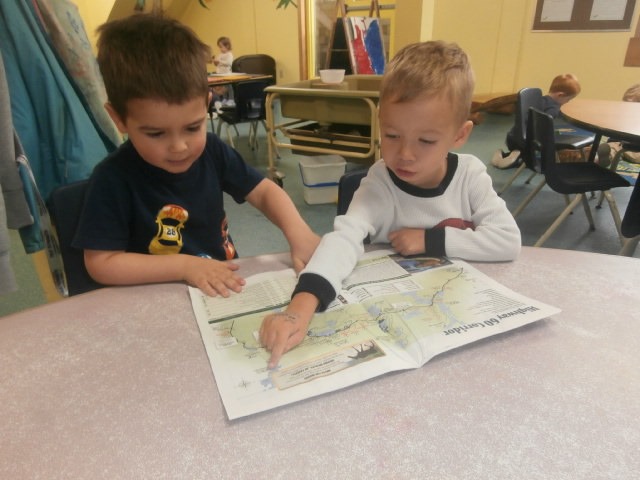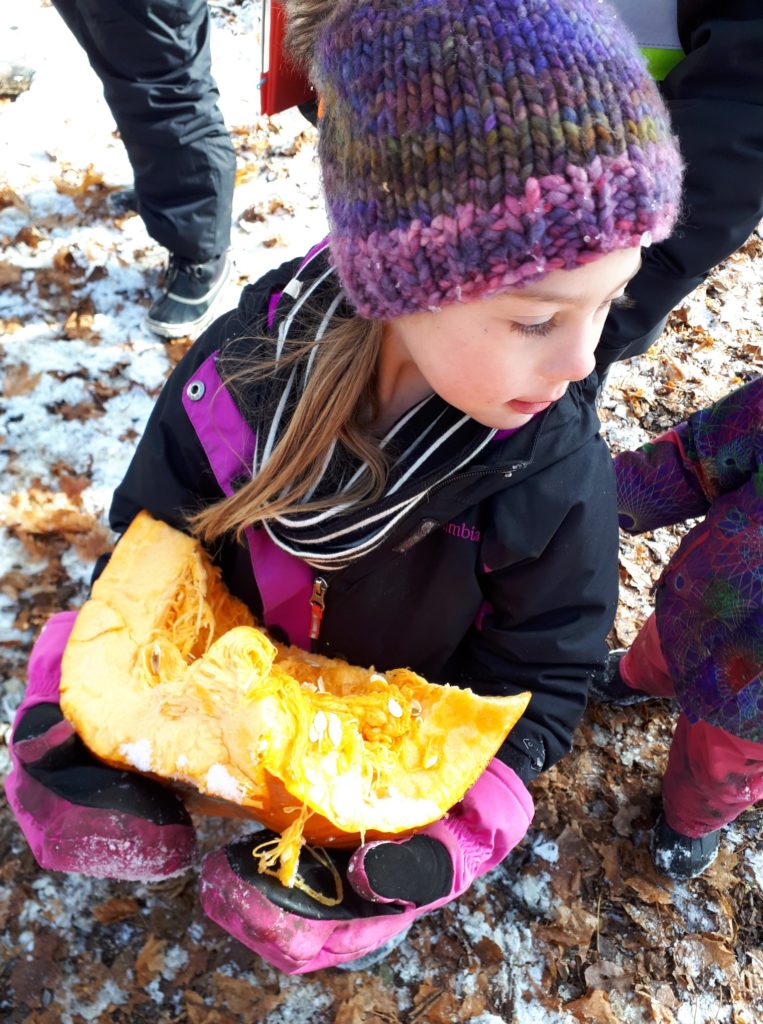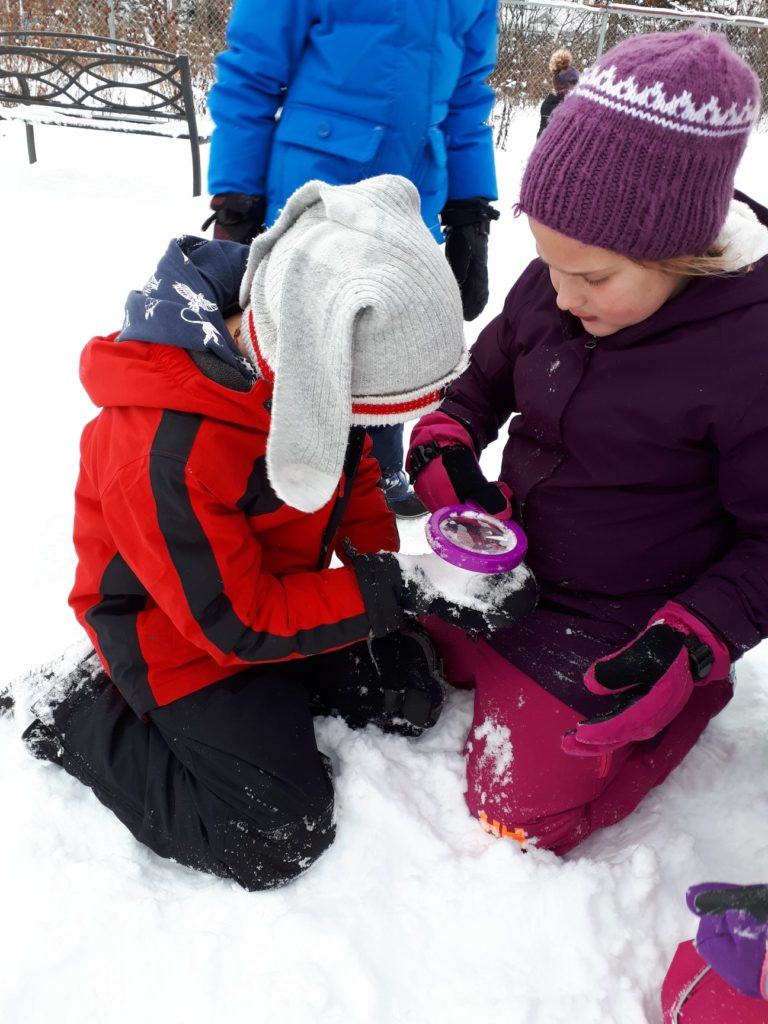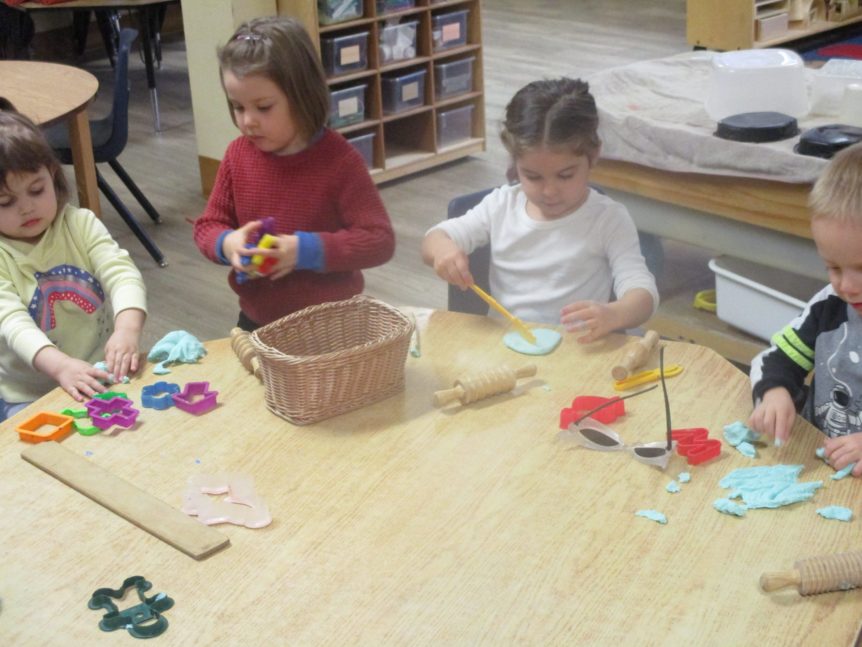We are so fortunate to live in a place where we get to witness the beauty of all four seasons. The school-agers noticed the transformation of the trees on our daily walk to school earlier this month and they had a lot of questions.
They wondered why leaves change colour at all? What makes them change, and why does it always happen in fall? They wondered if different types of trees leaves changed differently? We made some predictions and then we got to investigating!
The month soon changed, however, with numerous snowstorms signalling the start of winter. That’s not going to stop us from having fun here at Discovery Child Care! This month we learnt about the different seasons, created clouds, shared our travel experiences, studied animal winter routines and much much more!
Science experiments and travel
Last month our inquiries led us to explore shelters and the ways we can be protected from the elements in the sky. Since then, our inquiry has evolved into some other curriculum streams thanks to a collaboration with other educators and families.
Chelsa offered us the curiosity of, “What do clouds do in different seasons?” We investigated this using a science experiment to create a cloud. We used our field guides to learn about the different clouds and how the size, shape, and texture can teach us how far away the clouds are.
We used ice and hot water to create our own cloud and the children shared their theories of what will happen. We noticed that the clouds began to form inside the container and we learned that when the hot temperature and the cold temperature collide, it forms a cloud.

Another avenue that our inquiry has evolved into is mapping, perspectives, and orientation. This began when some of the children started to explore the different field guides, and resource books we have offered in our inquiry and noticed the different maps in the resources.
Z.W. brought in a map of Algonquin Park and shared his experience of using this map to help him find his campsite. This evolved into an experience where the children mapped out their trick or treating routes from Halloween and has continued to evolve into different curiosities about where we are in relation to the rest of the world.
H.C. asked Z.W. after a recent trip to Thailand, “Why isn’t Thailand on this map?” We hope to extend this inquiry into some amazing experiences involving travel, direction, and how we can use the sky as a means of transportation. We would love for our families to share some artifacts of stories from their travelling and the different countries they have travelled to. We hope to use this to make meaningful learning experiences for the preschoolers to begin to understand distance, direction, and as a tool to gain a perspective of themselves in this world.
Where do animals go in the winter?
With the colder temperatures and now all this snow, the Kinders have been curious about what happens to the animals in the winter season. We know that monarchs fly to Mexico (migrate) and bears hibernate. But what happens to the animals we see in the winter?

We have been talking a lot about migration, hibernation and adaptation. The children noticed some cardinals, blue jays, and even a woodpecker at the feeder outside the classroom one afternoon. This got us thinking about how those feeders help the birds in the winter.
Later, one of the preschool parents shared with Lisa, that they had taken their pumpkin to the forest after Halloween to feed the animals. Our friends thought this was a great idea so we did the same. We loaded them into the wagon and off we went.
When we got there, one of our friends noticed half a pumpkin in a tree. They were very curious and wondered if someone else had the same idea as us. We worked together to break the pumpkins up a little bit so none of the animals got stuck in them. The children tried many different ways of breaking them-some used sticks to poke them, others used a rock to try and break them and some even used their feet to stomp on them.
H.G.C. used two sticks to hammer into the pumpkin. Our friends moved the pieces to different areas to make sure the animals could see them.
When we came back a few days later, the children noticed little tiny bits of pumpkin on logs and on the ground as well as teeth marks on some of the pumpkin pieces. We wondered who ate them and then one of the children noticed a squirrel sitting in a hole in the tree with a large piece of pumpkin in its mouth! The Kinders were so happy they could help some of the animals in our forest. We are now thinking of other ways we can help feed the birds and animals in the winter. Stay tuned!
What is a snowflake?
The School Agers have been busy exploring the transformation we have seen in the weather and have taken a keen interest in snowflakes. We have already learned how temperature affects precipitation, and we have sure seen a lot of that white precipitation lately! We have been learning about the science behind snowflakes and discovered that a snowflake is a very cold drop of water that freezes onto a dust or pollen particles in the sky!

We learned that each snowflake has six sides, and that every snowflake is a little bit different. Through our research we found out that each snowflake travels at different speeds, and this changes the shape of how it freezes. So very cool…literally!
We looked at some microscopic images of snowflakes and found them fascinating. Some friends thought they looked like glass, which makes sense because they are actually ice crystals. So very beautiful.
We took our magnifying glasses outside to see if we could see individual flakes on the ground, and will continue this exploration during an actual snowfall. Our goal is to capture some photos of single flakes! Wish us luck! We would love to know what your family’s favourite winter activity is. Please send in a photo, or drawing, or paragraph to add to our family sharing board in our classroom! We look forward to hearing from you, and to continue exploring wonderful snow!
Documenting our learning
We have been using Claire Warden’s Floorbook method to document the children’s and teacher’s learning in the Kinder room. It has been a wonderful way for us to engage and collaborate with the children and families as well as reflect on all of the wonderful things we are learning together. Included in the book are photos of the children, their drawings, observations, research and most importantly, their very own words.
One of our tasks was to create a cover page for the Floorbook that reflects the children’s contribution to the book. Our inquiry on caterpillars has led us to all kinds of nature opportunities.
We took this opportunity and asked our friends to draw something they love about nature. The children were more than happy to show us what they love about the natural world – squirrels, caterpillars, trees, nests, butterflies and so much more.
The Kinders then glued their picture to the front of our book. They are very proud of their work and would love to show their family all of the wonderful things we have been learning. We invite you to pop in and have a peek anytime!
Want to see more of our adventures in November? Head over to our Facebook and follow us for the latest updates! To learn more about what we do, please contact us today.

